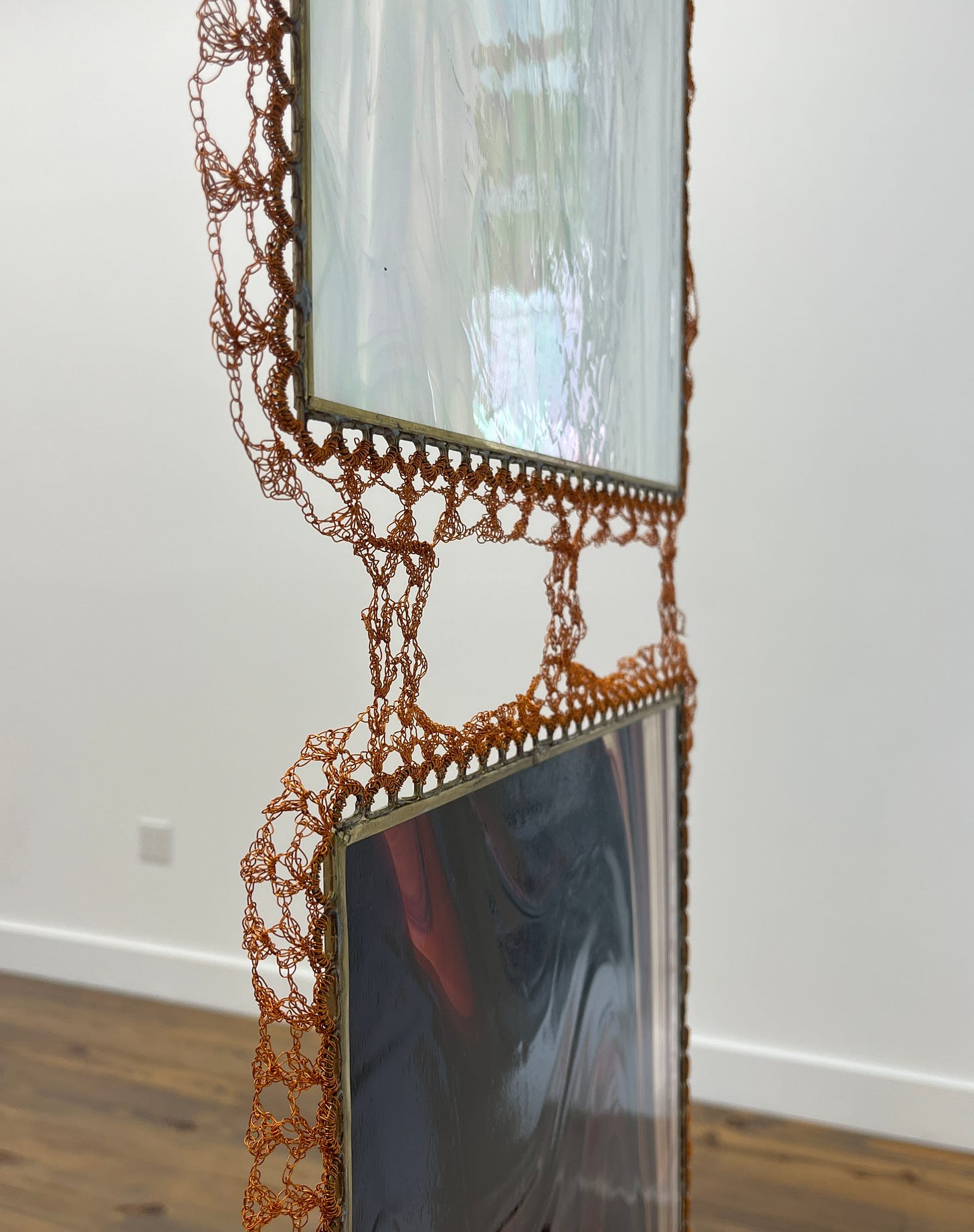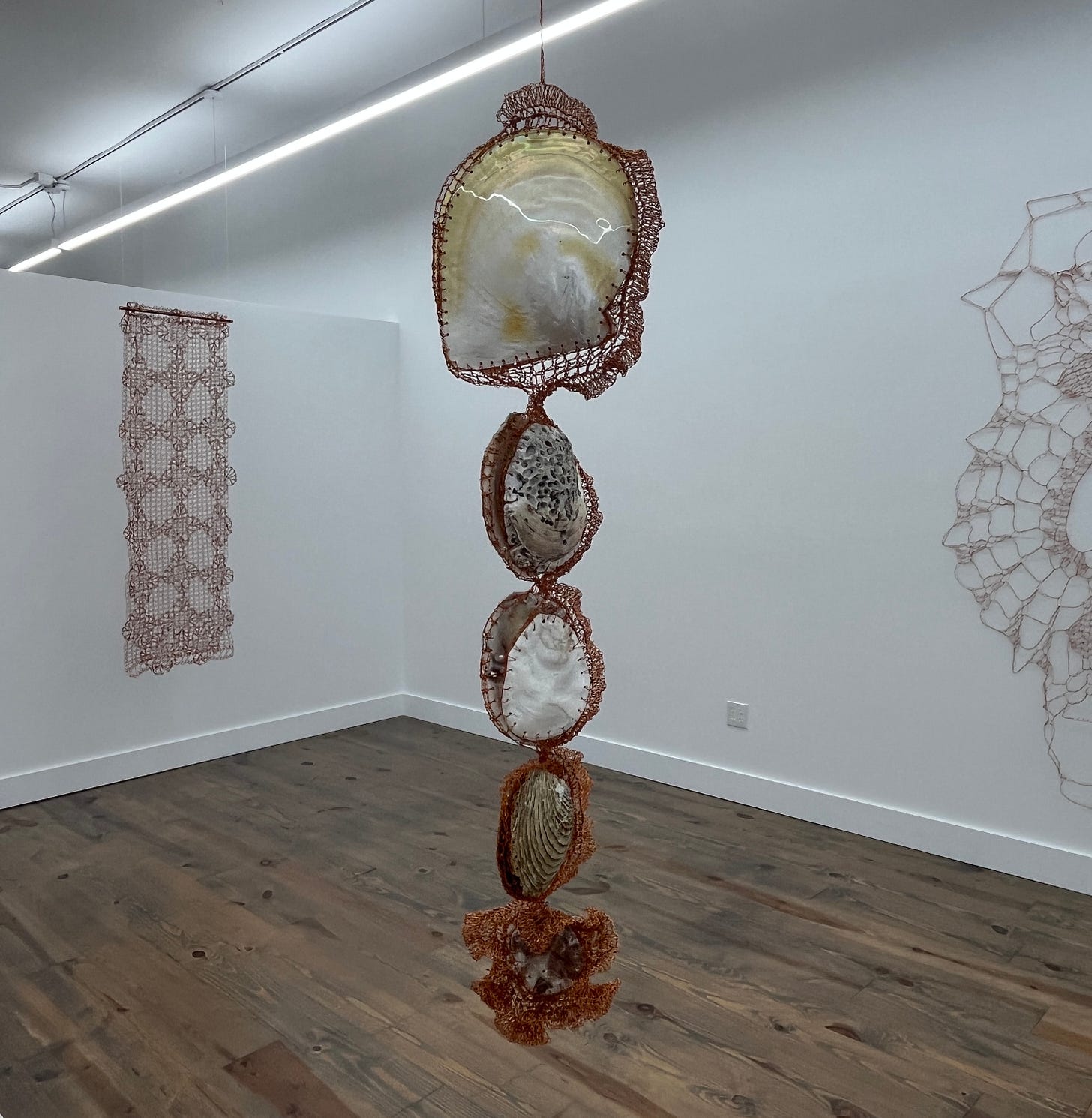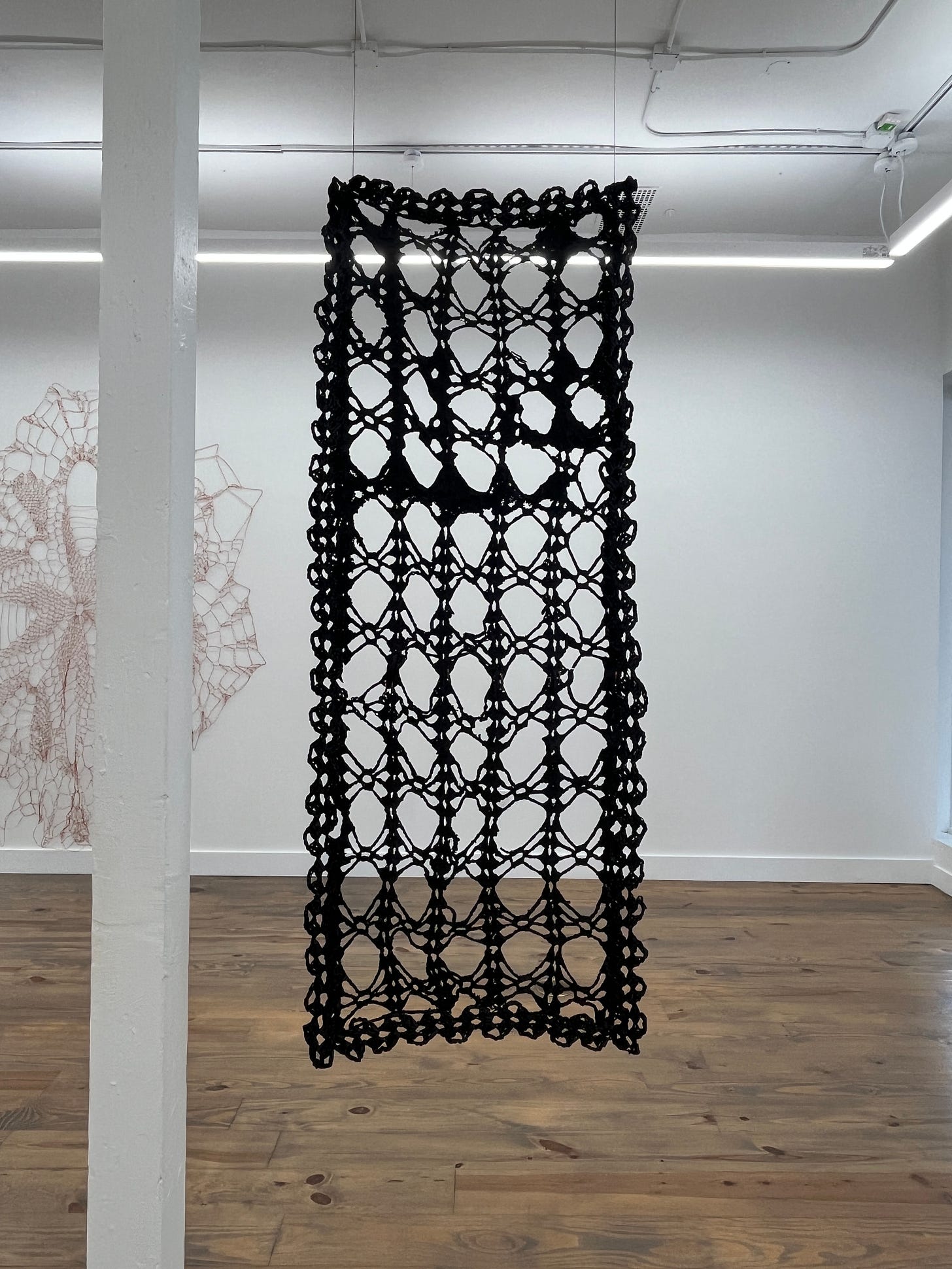Basket Cases
On Jeremy Frey and ektor garcia; or, Some Art in San Francisco Part 11
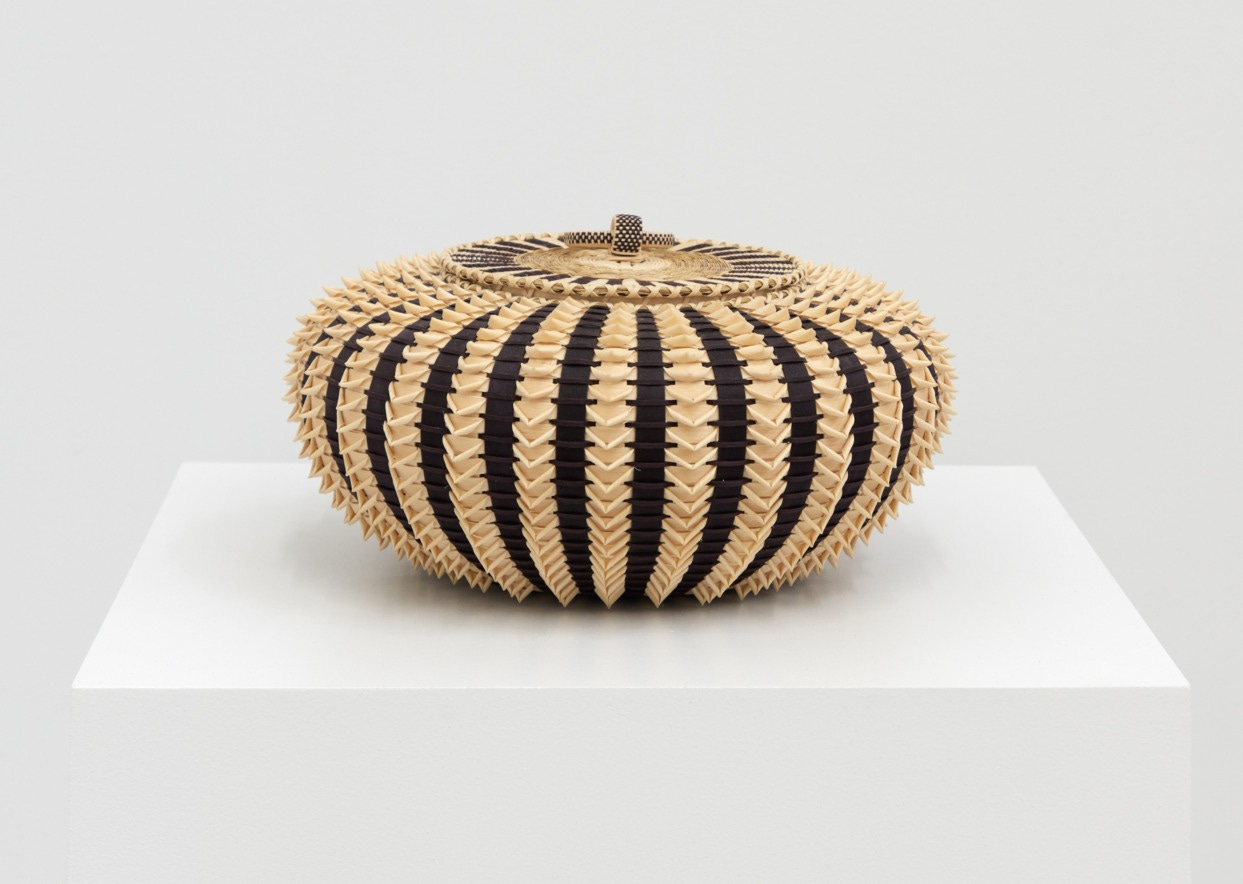
The speed with which Jeremy Frey went from showing his baskets with a major art gallery to winning a MacArthur “genius grant” should tell us something about the kind of visibility that is necessary for the Mac foundation’s panels to bestow such accolades on “visual artists.”
Frey, who was winning awards for his work at the Santa Fe Indian Market 15 years ago, was picked up by Karma in 2022, which brought his work to Art Basel Miami Beach that year, where it sold a piece to the Art Institute of Chicago, which then became the second venue for a survey exhibition of the artist’s work that originated at the Portland Art Museum in 2024. (The Denver Art Museum commissioned Frey for a work similar to the AIC’s in 2022; maybe the Denver trustees or curators were late to Karma’s ABMB booth that year?) Portland, for its part, has a number of pieces by Frey, only one of which was acquired before 2020, which is when the The Smithsonian picked up its own. Frey has had exactly two shows with Karma: one in New York in 2023, and one last year in LA. The Metropolitan Museum of Art was lucky enough to have its Frey gifted by billionaire Adam Forste in 2024.
None of this is meant to detract from Frey’s considerable talents. The baskets he weaves are unquestionably works of art in that broad sense. And the chicken-or-egg question about gallery representation and museum acquisitions/exhibitions is always just that, a question, not settled science. But oh how one wishes that Frey had been selected by the MacArthur committee in 2017 or 2018 on the strength of the work that had been winning awards in Santa Fe since 2011. Why the ingredients of metropole money and peak-liberal pieties must find their way into the mix to make such “tasteful” recognitions the recognitions that they are, even when arguably well deserved, is a question it appears we won’t soon be done with; it does result in the flavor being a bit off, though.
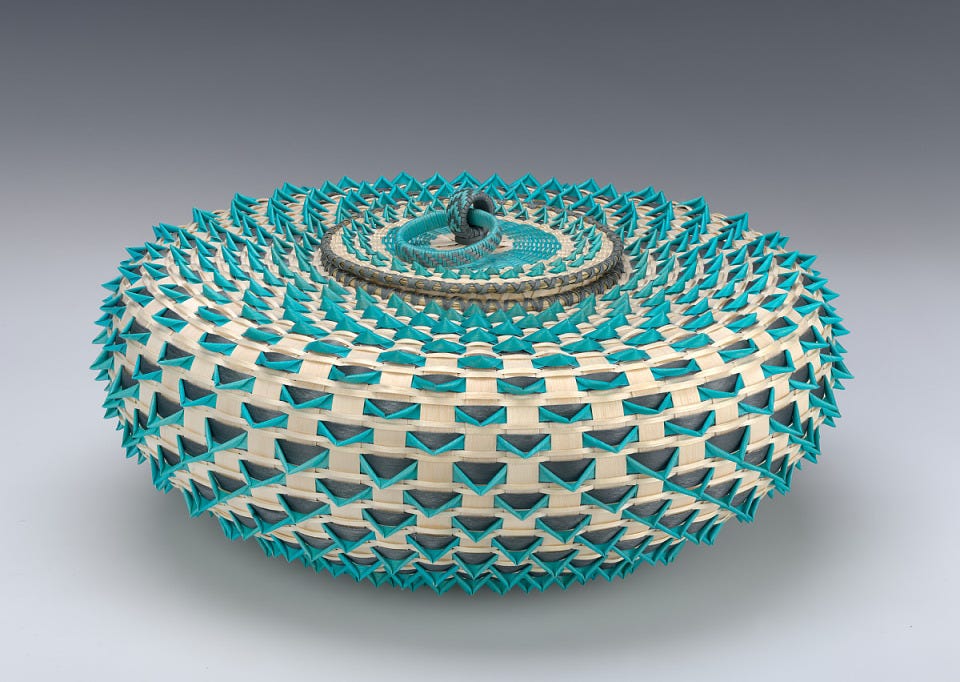
Cooked up differently, Frey’s recognition as the artist/artisan that he is further erodes the distinction between the “fine” and the “decorative” that has been a scourge to so many artists and advocates of the “craft” persuasions. But it erodes that distinction, not by attempting to “challenge” or “interrogate” or “undermine” that distinction — all hallmarks of a persistent modernist strategy of negation borne of suspicions that deeper truths or (raw) powers lie beneath — but from Frey’s decision to so wholly embrace the traditions in which he was trained so as to bring them to a new pinnacle of excellence and ambition.
There is a market logic to this, of course, one that the Comaroff’s identified back in 2009 as Ethnicity Inc., but it’s also the logic that sees brands built on the back of “craftsmanship” as the marker of enduring value in an age of cheap, fast and fickle fashion (think Vitsoe shelving, Shinola accessories, even Simco Audio). Again, that is not a dismissal, only an observation that Frey’s recognition is absolutely contemporary, is what makes his a contemporary art, and one which has no need of the “fine” or “decorative” qualifiers, insofar as today the vast majority of what goes under the name of fine art is just a subgenre of the decorative.
And ultimately, this is what I find dissatisfying about so much of ektor garcia’s work. Not formally trained in a familial tradition but rather credentialed in the profession of art by elite academic institutions — BFA Art Institute of Chicago; MFA Columbia University — garcia’s work isn’t at home with itself; perhaps the artist would take that as a compliment (who knows?).
The gestures at the “minor,” the “queer,” the “diminutive,” the “secondary,” even the “lower case” all smack of the academy and the museum, not the Mexican border, or some domestic scene. The work rather reinforces the hierarchies that its ventriloquists chatter about it challenging: soft work made hard because the artist chooses copper instead of thread; hard material rendered soft because put in the service of (feminine) artisanal traditions; raffia yarn, because, you know, crochet; abalone shells because, you know, shimmer. It’s all so prosaic, even as it desperately wants to say something, to be something, poetic.
I think of Carol Bove (another CA artist), whose work from 15 years ago set the bar for what garcia should like to achieve. Bove’s delicate juxtapositions of coral, of wood, against armatures of brass and steel, her display arrangements of found and made objects, spoke of nothing so much as intention and taking care. As much as garcia’s works speak to the labors involved in their production, which are obviously considerable, and even though they are resolute in their handmadeness, nothing about them appears careful. They’re worked rather than crafted; they belong to a discourse, not a tradition.
Perhaps that’s the point. Maybe the decorative artistic atmospherics of exploited or alienated or unremunerated labor is the point: the dirty doily; the faded, fraying crocheted throw; the tired interior. This is the kitsch that younger generations expect to find in the “ancestral” home, after they have flown the nest and found education and elevation elsewhere. It was never visible as kitsch before; it was just the stuff that grandmother liked. And now it is raw material for the symbolic capitalist to crochet into gold, which other symbolic capitalists will curate into the museum, which still others will use to illustrate their articles in the peer-reviewed journals.1
Frey’s baskets advance and extend a tradition; garcia’s hangings advance and extend a discourse that is also a class dynamic. Both may enter the museum or the collector’s home or the history books, but only one is dependent on doing so to be what it is; the other — and this is the counterintuitive genius of it — is free.
ektor garcia’s nu.dos is on view at Rebecca Camacho Presents in San Francisco through November 1, 2025. ektor garcia: loose ends opens at the San Jose Museum of Art on October 17, 2025 and runs through June 7, 2026. Jeremy Frey is 2025 MacArthur Fellow.
Yes, the actual capitalists will hang it on their walls or (what is more likely) store it away. Hardly a critical point worth making today.



